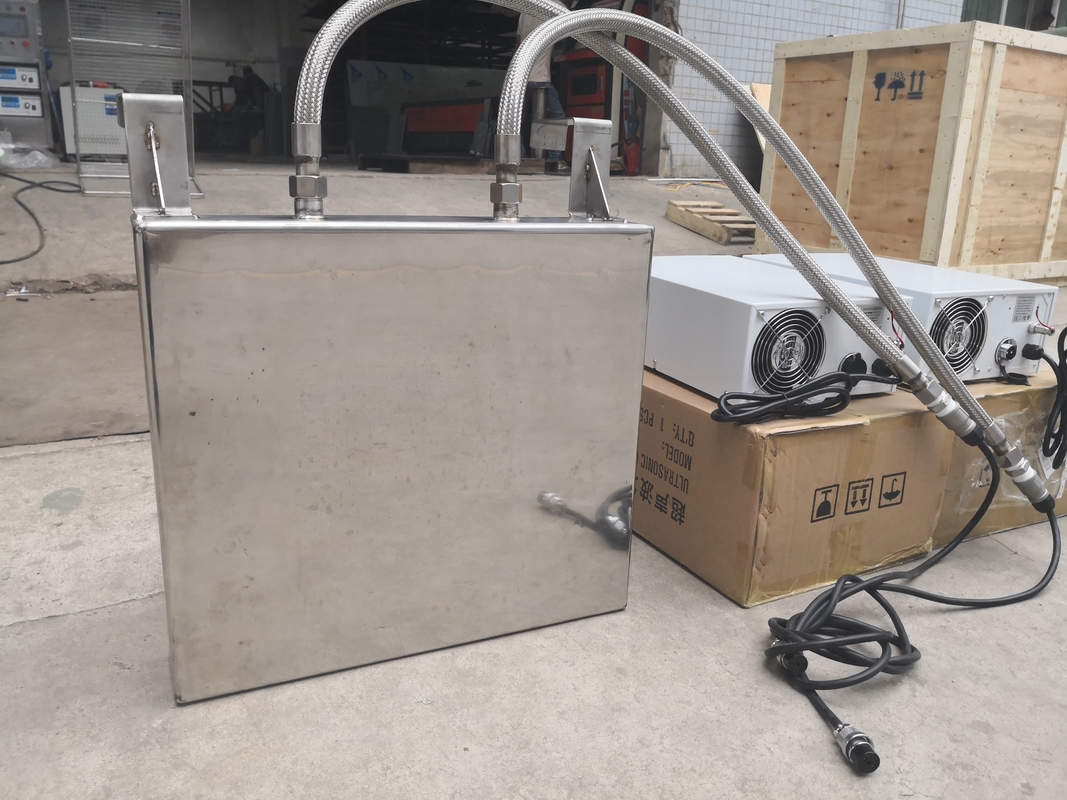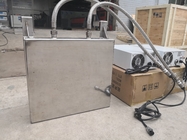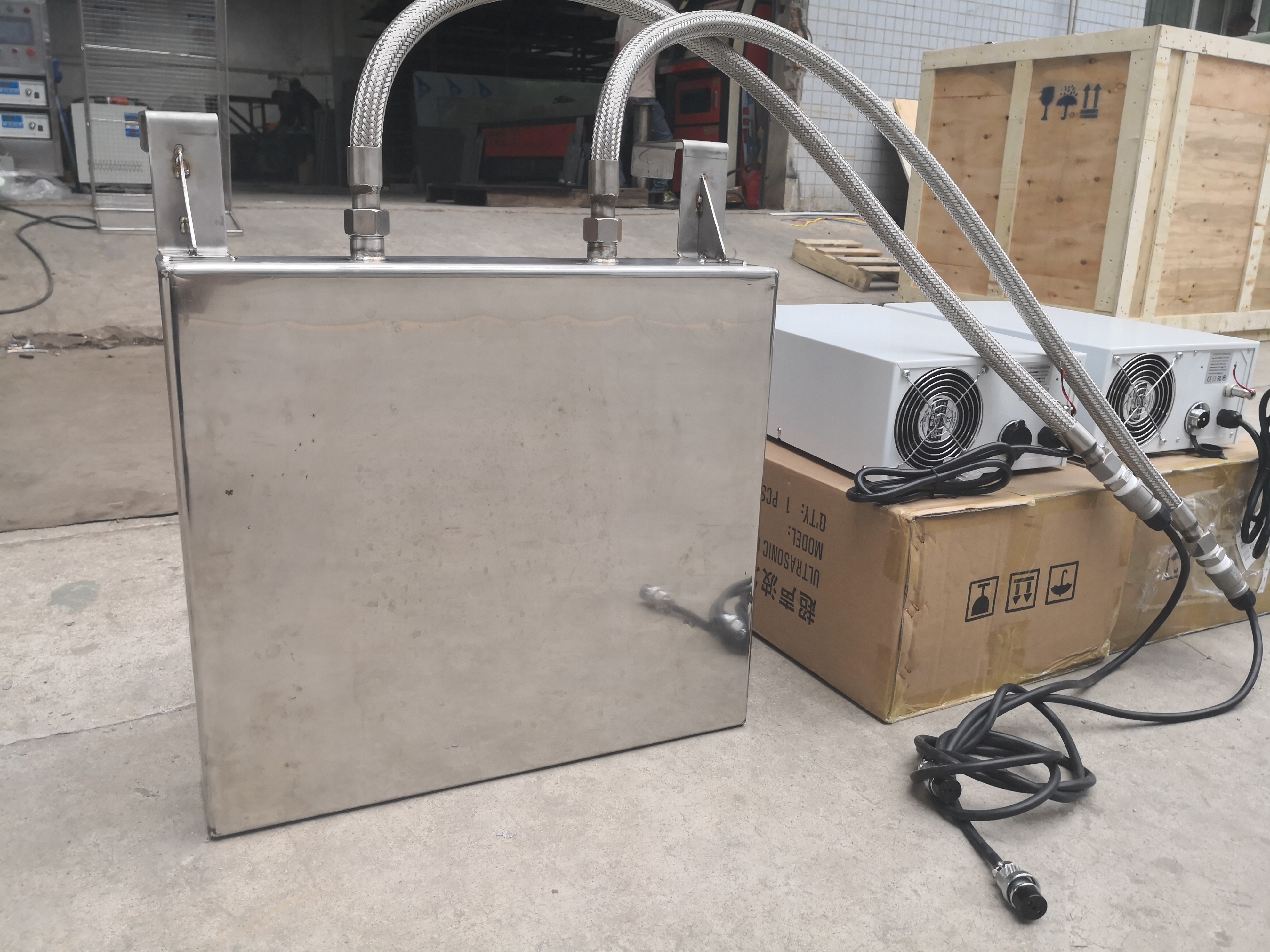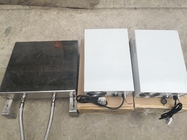The ultrasonic generator
The ultrasonic generator converts a standard electrical frequency of 60 Hz into the high frequencies required in ultrasonic transmission.
The ultrasonic frequency generator plays a key role in the overall performance of the system. Earlier generator designs developed a fixed frequency signal designed to operate at the resonant frequency of the transducer system. For example, if the design frequency of the transducer was 20 kHz, the generator developed exactly a 20 kHz signal. The problem with this design is that it tends to create hot spots and standing waves in the tank bath, providing uneven cleaning in different tank areas.
The development of sweep frequency generators eliminated these problems. In most any ultrasonic cleaning system, there are multiple transducers that make up the transducer system. Due to manufacturing tolerances, it is highly unlikely that each transducer will have exactly the same resonant frequency. With a fixed frequency generator, the transducers that are closest in resonant frequency will operate the most efficiently in their respective areas, creating an uneven cavitation pattern. By sweeping the frequency just slightly above and below the center frequency, all transducers see their resonant frequency at the rate of sweep and maximum efficiency occurs, eliminating hot spots. Sweep frequency also eliminates standing waves from occurring by repeatedly overlapping the wavelength.
Many ultrasonic generators also have “autofollow” circuitry. Autofollow circuitry is designed to maintain the center frequency when the ultrasonic tank is subject to varying load conditions. When parts are placed in the tank or when the water level changes, the load on the generator changes. With autofollow circuitry, the generator matches electrically with the mechanical load, providing optimum output at all times to the ultrasonic tank.
Ultrasonic Tank And Transducer Installation
Our immersible transducer is custom designed for your particular application and tank size. It can be incorporated into existing tanks of any size and converted it into ultrasonic tank. It is controlled by our unique Pulse Swept Pleasecontact us for specific information on how we can create one for your Immersible Transducer needs.
The range of immersible transducers come in various sizes ultrasonic powers and operating frequencies. We can select the size you need based upon your cleaning requirements and tank size. The immersible ultrasonic transducer systems are portable and can be moved from one tank to another if required. They are most suited to when you have already a tank installed in your production process or we can supply the complete system including the tank.
Immersible ultrasonic transducers are designed for use in new or existing cleaning tanks to improve the speed and effectiveness of rinsing cleaning and other processes. Single or multi- module units can be custom designed for tanks of any size.
Brief Introduction of the immersible ultrasonic transducers:
Immersible ultrasonic transducers are sealed stainless steel enclosures which allow for adding ultrasonics to parts cleaning new tanks or adding onto existing tanks, equipment and systems.
The number and placement of the submersible Transducer Pack
There are pros and cons to both entry routes. Many customers prefer to buy the riser-style transducer packs because they do not want to make a hole in the bottom of their tank. The main disadvantage to using risers is that they may interfere with the cover or other system parts that are installed on the top. Most AGSONIC submersibles are custom manufactured in order to maximize the effectiveness of the ultrasonic system and to minimize possible dead spots. We are the only manufacturer to offer this service at no additional charge. We also have a line of standard ultrasonic submersible systems available.
If you think your existing cleaning tank may be suitable to adapt to ultrasonic cleaning please contact our technicians at AGSONIC and we will be pleased to provide you with more information and a quotation for a custom-made submersible system.
Immersible ultrasonic transducers do not require attachment to the tank (other than to hold them in position) to function efficiently. As a result, transducers can be moved from tank to tank and positioned as required for special applications when needed. Various mounting options are shown below.
Immersible transducer Types:
Bottom Monunted -over Top Junction Box
Bottom Mounted with dual Bulkhead
Bottom Mounted With single Bulkhead
Bottom Mounted With Over The Top Pipe
Side Mounted With Over the Top Pipe
Side Mounted With Bulkhead Thru Side Wall
Mounting may be either wall or bottom mounted, depending on the application. The units are shipped fully assembled and require only simple insertion into the tank prior to operation.
Specifications:
| Model |
Material |
Transducers |
Estimated volume |
Box size |
Cable
lead-out |
Ultrasonic frequency |
Ultrasonic power |
| (mm) |
(pcs) |
(L) |
(mm) |
|
(kHz) |
(W) |
| TZ-1003 |
SUS304/SUS316L |
3 |
15 |
250x150x100 |
Rigid tube/
Flexible tube |
28/40 |
150 |
| TZ-1006 |
6 |
30 |
305x250x100 |
300 |
| TZ-1012 |
12 |
60 |
355x250x100 |
600 |
| TZ-1018 |
18 |
90 |
406x305x100 |
900 |
| TZ-1024 |
24 |
120 |
500x355x100 |
1200 |
| TZ-1030 |
30 |
150 |
550x406x100 |
1500 |
| TZ-1036 |
36 |
180 |
500x460x100 |
1800 |
Enhance the cleaning power of your existing tank with AGSONIC Submersible Ultrasonic Cleaning Systems
For customers who would like to improve the cleaning power of their existing tank by installing an ultrasonic cleaning device, AGSONIC's submersible system may be the most economical and efficient choice on the market.
However, before buying a submersible system, please consider the tank you already have and its material of construction.
How are ultrasonic waves produced?
When high frequency sound waves are passed through a cleaning fluid such as water with a suitable detergent additive, many millions of microscopic bubbles form and collapse. These bubbles are the result of the stretch and compress phrases of the sound waves within the fluid, the whole process is known as cavitation. Micro-bubbles will implode under the mechanical action of ultrasonic waves and a large amount of energy will be released and the local temperature will increase. The bubbles are forced into crevices where the fluid can penetrate between the contamination and the workpiece and leaving it totally clean and free of hidden soils.
The different ultrasonic frequencies
25 KHz - The most powerful frequency to remove strong pollution. Do NOT use on mirror polish surfaces and sensitive materials like glass, aluminum...
40 KHz - Standard frequency which can be compatible on a wide range of material and for removing a lot of pollution.
80 kHz - This frequency is used to clean parts with complex geometry. Cavitation bubbles can go into small holes to remove the pollution.
120 kHz and Megasonic - Main application in precision optics to clean very sensitive parts like wafers. The power of cavitation is low so these frequencies are used on clean parts to remove dust in final cleaning.



 Your message must be between 20-3,000 characters!
Your message must be between 20-3,000 characters! Please check your E-mail!
Please check your E-mail!  Your message must be between 20-3,000 characters!
Your message must be between 20-3,000 characters! Please check your E-mail!
Please check your E-mail! 





